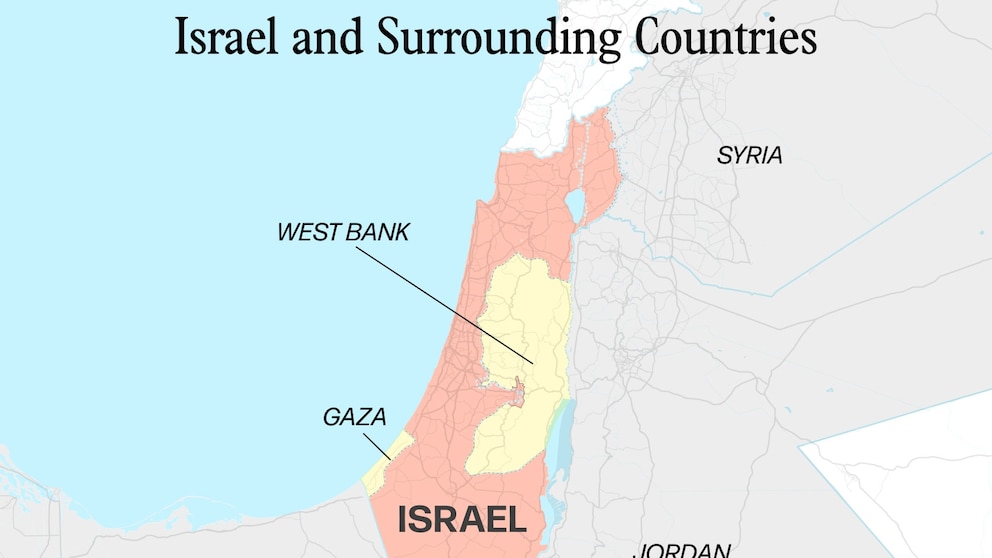Israel’s geography and relatively small size have been some of the major factors behind the decades of conflict between it and surrounding nations, according to an expert.
A special edition of “20/20” at 10 p.m., Wed., Oct. 11, on ABC looks at life under threat in Israel and Gaza and how this attack is different from what we’ve seen in this region in the past.
The country sits in the eastern Mediterranean section of the Middle East, bordering Egypt, Lebanon, Syria and Jordan. All of these nations have had military battles against Israel since it declared its independence in 1948.
Steven E. Zipperstein, an assistant adjunct professor at UCLA’s Luskin School of Public Affairs who has taught in Israel, said Israel’s geography and relatively small size are “double-edged swords” when it comes to defense and vulnerability.
On one hand, Israel has all of its resources, from military bases and personnel to short-range rockets, ready to go on a moment’s notice because of its density, he said. But at the same time, Zipperstein said the country’s size and proximity to its enemies make its people and infrastructure “sitting ducks.”

Israel and Surrounding Countries
ABC News
Israel’s geography is most comparable to New Jersey, according to Zipperstein.
“Imagine you’re living in Newark and someone is firing rockets from the other side of the Hudson River,” Zipperstein told ABC News. “How much time would you be able to prepare and get to safety?”
Israel has a total area of roughly 8,469 square miles and a population of about 9.3 million people, according to U.S. Census data, with roughly 1,098 people per square mile.
The total area of the United States, by comparison, is roughly 3.8 million square miles with an estimated population of 333 million people, and a density of 87 people per square mile.

Israel’s Size, Population Are Similar to New Jersey
ABC News, Census Data
The Northeast state also has a population of about 9.3 million people and encompasses 8,722 square miles, according to the U.S. Census. Its density is 1,263 people per square mile.
Zipperstein said this weekend’s rocket attack by Hamas terrorists exemplified the dangers of Israel’s small size. The rocket fire from Gaza moved quickly into bordering cities such as Ashkelon and did more damage compared to locations farther away and less densely populated, according to Zipperstein.
“When the siren goes off and you’re out and about, you have 12 to 15 seconds to make it to safety,” he said. “This is the reality of living in a tiny country with your enemies literally outside the front door.”

A man holds the remains of a rocket that was launched from the Gaza Strip and landed in Ashkelon, southern Israel, Oct. 11, 2023.
Amir Cohen/Reuters
Zipperstein said that Israel has adapted to its geographic situation with other strategies such as the Iron Dome air defense system, cyberwarfare and other technology.
“But we have to note, as we saw last weekend, Israel’s enemies have been able to adapt to Israel’s small size and density,” he said.

